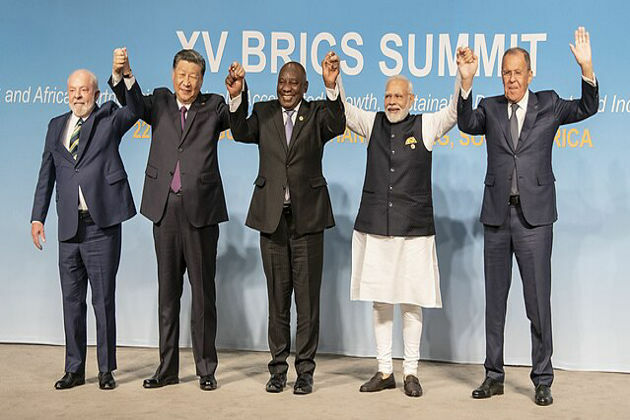IAN MANN REVIEWS | Making innovations that make money
News24
23 May 2020, 13:30 GMT+10

by Madhavan Ramanujam and Georg Tacke
This book comes at a good time. Everyone in business today knows that things have to change, and the call is to innovate - doing what we have always done will no longer achieve what it used to. Besides which most innovations have a horrible habit of failing to live up to the excitement they can generate for their innovators.
Consider the difference between the Chrysler Dart and Porsche Cayenne, the case study with which the book opens. The Dart was expected to be "perfection", and the engineers were given the mandate and the latitude to build just such a car. When the manufacturer was sure that the job had been done, and they had produced a 'perfect' compact car the world would clearly want, they launched the car. It was "Apple maps" bad!
When Porsche decided to enter the SUV market - a product clearly out of their comfort zone - they investigated every feature the customer would want, and how much they would be willing to pay for that feature. The Cayenne enabled Porsche to generate the highest profits per car in the industry!
How did they get it so right? They built the car around the price, not the price around the car.
More to price than a number
The instinctive understanding of price is that it is a number. This book argues that there is more to it than that. "Price is both an indication of what customers value and a measure of how much they are willing to pay for that value," the authors explain. Understanding that insight and its fundamental importance, is the axiom of this book. The rest is the practical business of making it happen.
With the sky-high rate of failure or underperformance of innovations, it is most useful to know how failure happens. The authors' company, Simon-Kucher, has been doing this sort of work for 30 years, and currently, out of 38 offices globally. They have identified four types of failures which provides an immediate caution.
READ | OPINION | The road to SA's recovery is green
The first is 'feature shock', where you try to cram too many features into one product, this results in a confusing and often expensive mess. Innovation teams, in the enthusiasm and excitement of creating, are often blinded to the realities of the market. The warning signal is when your R&D team keeps saying, "let's add this," without being able to articulate the new feature's value to customers.
Customers won't buy a product if they cannot easily see why that product helps them. It is seductive to pack the product with so many 'nice-to-haves' and far fewer 'must haves'. It is not unusual for a client to be so "shocked" by the volume of features that they overlook the few features that they value, and will gladly pay for. The typical result is profit-destroying discounting.
Try before you buy
The remedy? Every single feature must stand trial before the customer for their willingness to pay for it. "Feature shock" is prevented by building a product with the features the customer values enough, to need to make the purchase.
You are no doubt wondering how to know that your customers will value these specific features. How do you know which features they'll pay for, and which they can do without? Early in the innovation development process, you need to have a pricing talk - yes talk about the price! What is your customer's overall price range they would consider reasonable for the value you can offer? The alternative to having this unusual discussion is failing to monetise your innovation to its maximum. Think Cayenne vs. Dart.
The second type of failure is "Minivation". Despite being the right product for the right market, it is priced too low to achieve its full revenue potential. Why didn't you know you could have charged more for the value you provide? Because you skipped a thorough price discussion during the development phase.
The third type of failure is the "hidden gem", a blockbuster product that was never properly brought to market, and so is unrecognised. Possibly, the real value was not recognised by the innovation team because they failed to hold the price discussion... Recall - the price is only the expression of the value the customer perceives, and their willingness to pay for it.
The fourth type of failure is the "Undead", the product that should have been killed because it answers questions no one asks, or provides the wrong answer to the right questions. Yes, the price discussion with customers during development, would obviate this.
Not nearly enough work goes into correct pricing, despite being a far easier way to make money than expensive R&D.
In 2008 Asus unveiled a mini-notebook priced at €299 and consumers reacted enthusiastically. In days after the launch in Germany, it was close to sold out. The demand exceeded supply by 900%. Asus couldn't manufacture fast enough and lost significant revenue. They could have priced this computer much higher - it was way under-priced - and Asus left huge profit on the table.
In 2006 Audi launched the Q7 at €55 000. Demand turned out to be 80 000 units per year worldwide, but Audi's production capacity was 70 000 units. Had they priced the Q7 at €58 000 to clear 70 000 units, they would have earned €210 million annually on those same 70 000 units.
Having the "willingness to pay" talk with your potential or existing clients early, will help you in essential ways. It will make clear whether you have an opportunity to monetise your product, or not. It will guide your prioritisation of features so that the product will include the right ones and enable you to avoid the four types of failures.
What you will learn from these interviews will also give you the courage not to price your product too low.
"Our 2014 survey of 1 600 companies in more than 40 countries found 80% wait until just before their product is introduced to the marketplace to determine its price. Of those 80%, the majority do not have the 'willingness to pay' conversations at all," the authors report.
This is a practical book with guidance on how to structure the price conversation, how to segment your market and how to arrive at the correct price strategy. And it is replete with examples of pricing errors and successes, of well-known companies and products.
Readability Light --+-- Serious
Insights High +---- Low
Practical High +---- Low
 Share
Share
 Tweet
Tweet
 Share
Share
 Flip
Flip
 Email
Email
Watch latest videos
Subscribe and Follow
Get a daily dose of Japan Herald news through our daily email, its complimentary and keeps you fully up to date with world and business news as well.
News RELEASES
Publish news of your business, community or sports group, personnel appointments, major event and more by submitting a news release to Japan Herald.
More InformationAsia Pacific
SectionBeijing hits back at EU with medical device import curbs
HONG KONG: China has fired back at the European Union in an escalating trade dispute by imposing new restrictions on medical device...
India's Consulate in Seattle hosts mango tasting event
Seattle [US], July 11 (ANI): As part of the Indian Consulate General in Seattle's trade promotion and increased market access initiatives,...
"It's quite funny, I'm playing the 100th in a pink-ball game": Starc reflects on his 100th test
New Delhi [India], July 11 (ANI): Ahead of his 100th Test of his career, Australian pacer Mitchell Starc said it's quite funny that...
Petals in the Wind, Roots in Our Hearts
By Suvir Saran New Delhi [India], July 11 (ANI): Life does not end when the body rests. It does not dim when the breath quiets. For...
Women's Big Bash League 11 schedule announced; Melbourne Renegades, Brisbane Heat to play opening fixture
New Delhi [India], July 11 (ANI): Melbourne Renegades and Brisbane Heat are set to kick off the Women Big Bash League (WBBL) 11 season...
Taiwan reports heightened Chinese incursions around territory
Taipei [Taiwan], July 11 (ANI): Taiwan's Ministry of National Defense on Friday detected one Chinese aircraft and nine Chinese naval...
Business
SectionEx-UK PM Sunak takes advisory role at Goldman Sachs
NEW YORK CITY, New York: Former British prime minister Rishi Sunak will return to Goldman Sachs in an advisory role, the Wall Street...
Gold ETF inflows hit 5-year high as tariffs drive safe-haven bets
LONDON, U.K.: Physically backed gold exchange-traded funds recorded their most significant semi-annual inflow since the first half...
PwC: Copper shortages may disrupt 32 percent of chip output by 2035
AMSTERDAM, Netherlands: Some 32 percent of global semiconductor production could face climate change-related copper supply disruptions...
U.S. stocks recover after Trump-tariffs-induced slump
NEW YORK, New York - U.S. stocks rebounded Tuesday with all the major indices gaining ground. Markets in the UK, Europe and Canada...
Stocks slide as Trump unveils 25% tariffs on Japan, S. Korea
NEW YORK CITY, New York: Financial markets kicked off the week on a cautious note as President Donald Trump rolled out a fresh round...
BRICS issues rebuke on trade and Iran, avoids direct US criticism
RIO DE JANEIRO, Brazil: At a two-day summit over the weekend, the BRICS bloc of emerging economies issued a joint declaration condemning...













